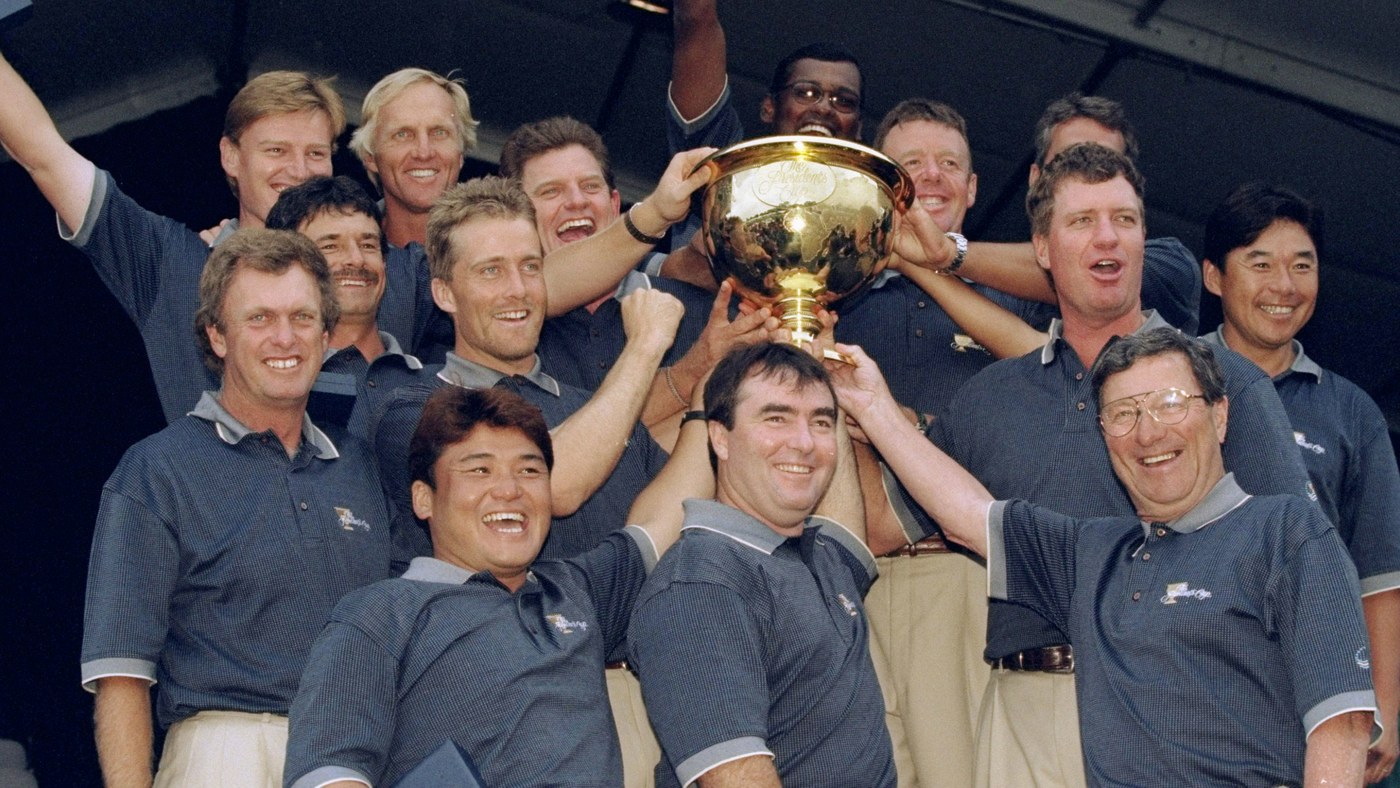By Dave Shedloski
Say this about the Americans’ 1998 Presidents Cup defeat at the hands of the International Team: It does not stand alone as the worst loss a United States squad has suffered in the history of major men’s professional team competitions. For that, the team can thank its red, white and blue Ryder Cup counterparts of 2004 and ’06, both beaten by the Europeans by the same nine-point margins, the former at home, at Oakland Hills outside Detroit.
Still, such a lopsided loss is awfully humbling, and that’s what the Americans had to countenance as the sunset Dec. 13, 1998 at Royal Melbourne Golf Club in Australia, the third Presidents Cup becoming known as the “Massacre in Melbourne.”
Internationals 20½, USA 11½.
“We creamed them,” said Aussie native and 1998 International team member Steve Elkington, offering a bitingly succinct summation.
After two U.S. victories at Robert Trent Jones Golf Club in Manassas, Va.—the first, in 1994, a blowout, the second, in 1996, a one-point nail-biter—the Presidents Cup finally ventured abroad. Needless to say, things didn’t go well for a vaunted U.S. team that was the heavy favourite. Then again, the Yanks were becoming used to going home disappointed after being favoured in team events, as had begun to happen in the Ryder Cup.
Twenty-one years ago, the Presidents Cup was still a novelty, and the International team was eager to bring validation to Tim Finchem’s grand initiative. The PGA Tour commissioner hoped the event could catch on in popularity in a similar fashion to the Ryder Cup, which enjoyed a much longer history and, more recently, a heightened sense of rivalry and drama.
A lot was riding on the 1998 event, particularly for international stars Greg Norman and Nick Price, who were vocal supporters of the matches. “The worst thing that could have happened to this competition,” Price said, “is that if either side dominated.”
Indeed, the Internationals couldn’t afford to let that happen, and finally playing “at home,” under the leadership of Australian great Peter Thomson, they had a real chance to get a victory. A win wouldn’t have been surprising. That they were able to deliver a thorough beating to a U.S. squad that counted elite players like Tiger Woods, Phil Mickelson and David Duval, however, was wholly unexpected.
So how did the Internationals execute such a decisive triumph? Here are the leading elements of the washout:
Poor U.S. preparation
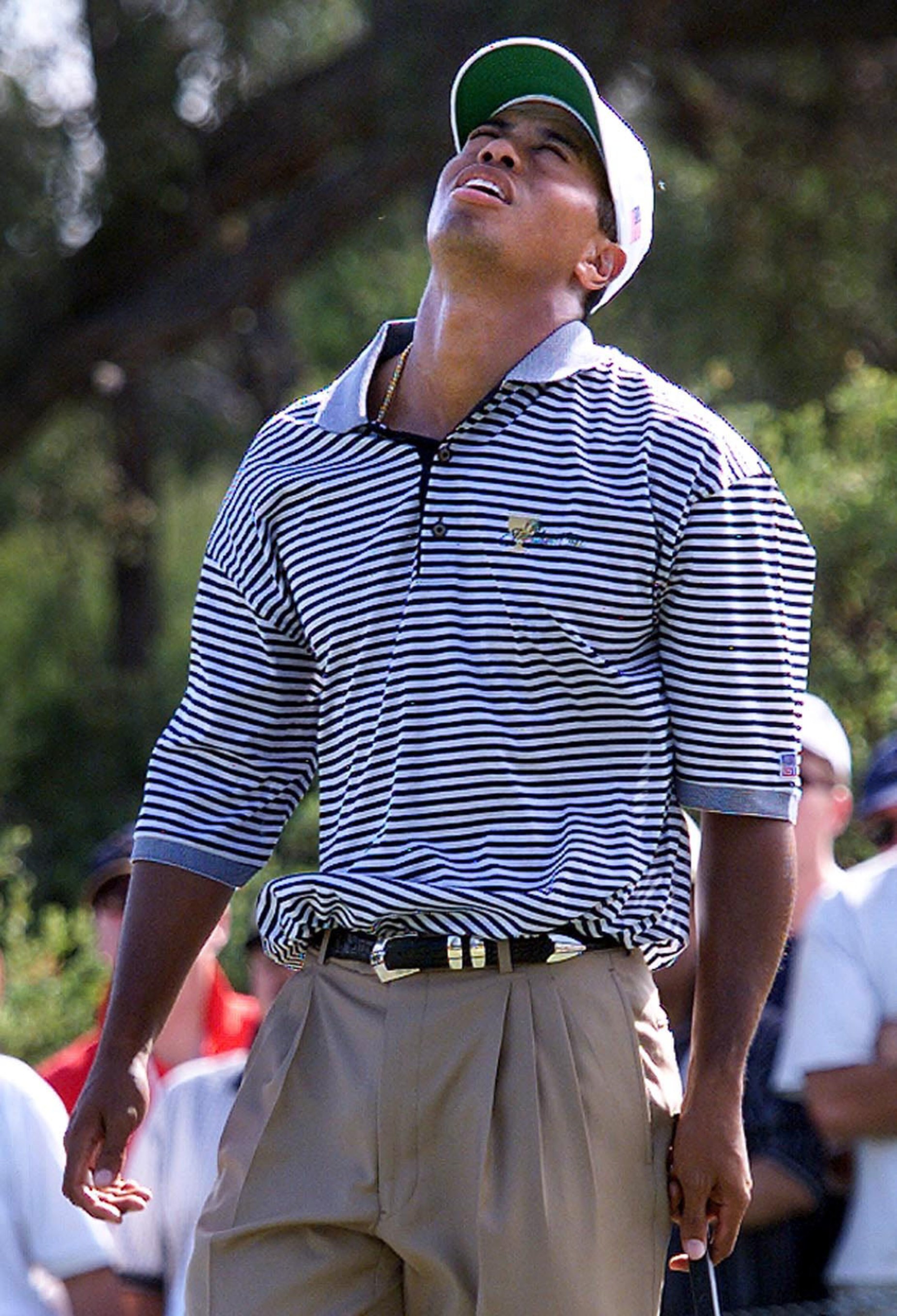 The Presidents Cup that year was contested Dec. 11-13. The last putt of the 1998 PGA Tour season dropped at the Tour Championship at East Lake on Nov. 1. Few of the U.S. players competed in between, if they picked up a club at all. Woods, playing captain of this year’s U.S. team, remembers it well, saying only a few days ago prior to the Hero World Challenge, that “we just weren’t ready to play.” Davis Love III, who went 1-3-1, apologized to U.S. captain Jack Nicklaus when it was over, admitting that he and his teammates hadn’t properly prepared for the highly talented International squad that not only had Norman and Price, but Ernie Els and Vijay Singh in their primes. It didn’t help that stifling heat blanketed Royal Melbourne on Day 2, taking even more sting out of the ill-prepared Americans. They were outscored that day 7½-2½, and trailed 14½-5½ overall entering singles. Good night USA.
The Presidents Cup that year was contested Dec. 11-13. The last putt of the 1998 PGA Tour season dropped at the Tour Championship at East Lake on Nov. 1. Few of the U.S. players competed in between, if they picked up a club at all. Woods, playing captain of this year’s U.S. team, remembers it well, saying only a few days ago prior to the Hero World Challenge, that “we just weren’t ready to play.” Davis Love III, who went 1-3-1, apologized to U.S. captain Jack Nicklaus when it was over, admitting that he and his teammates hadn’t properly prepared for the highly talented International squad that not only had Norman and Price, but Ernie Els and Vijay Singh in their primes. It didn’t help that stifling heat blanketed Royal Melbourne on Day 2, taking even more sting out of the ill-prepared Americans. They were outscored that day 7½-2½, and trailed 14½-5½ overall entering singles. Good night USA.
Commitment to the cause, U.S. story
The Presidents Cup was still young, and the U.S. had won the first two. It’s easy to understand, then, how the event wasn’t a priority compared to the Ryder Cup, which was becoming a highly emotional and heated grudge match (and would get even more so the following year when the U.S. rallied from four points down the final day in singles to stun Europe at The Country Club in Brookline, Mass.). But in 1998 the U.S. was coming off a stinging defeat the previous year at Valderrama. The U.S. fell to 2-4-1 in the last seven Ryder Cups, and, well, why should the Americans care about beating a bunch of their PGA Tour peers when those pesky, plucky Europeans, most of whom still played primarily in Europe, were showing them up regularly? Said Calcavecchia in the aftermath, “It’s never fun to lose, but if you’re going to lose to anybody, I’d rather lose to these guys than the Europeans.”
Commitment to the cause, International story
With a chance to host the Presidents Cup for the first time outside the United States, the International team was eager to prove its worth in the competition. Norman and Price especially had waited a long time to play in an event similar to the Ryder Cup. This was their moment. Said Price: “It wasn’t a question of beating America. It was a question of winning that Cup. We want that trophy.” Norman wanted to show the world “the force of international golf.” And, let’s be honest, nobody likes losing. “We had a sour taste in our mouths from last time,” said Craig Parry, one of four Australians on the squad, after their runaway triumph. “We wanted to have champagne in our mouths tonight.”
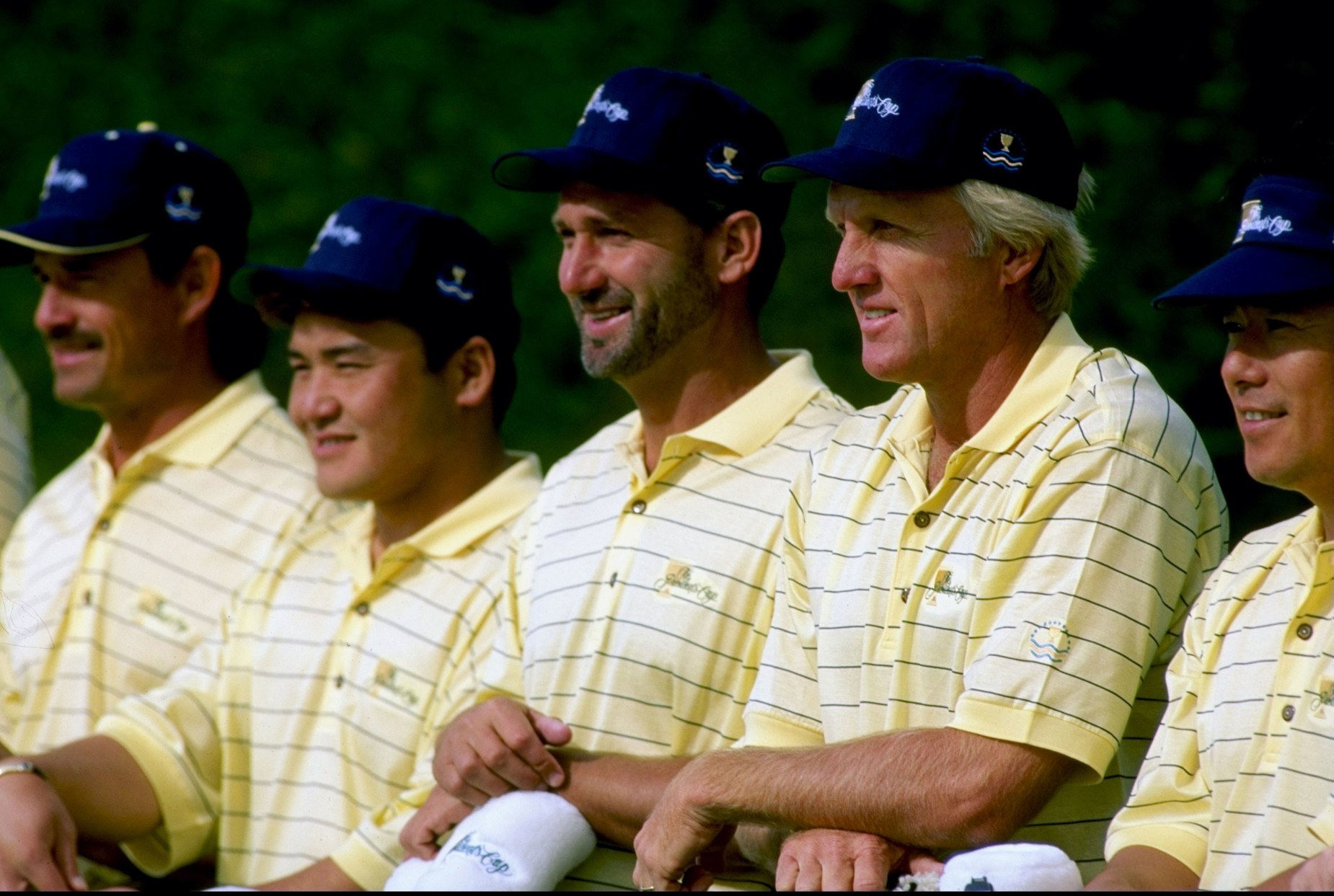
Craig Jones
Norman was among the marquee International players looking to make a statement.
Pairings infused with national pride
The International Team has struggled to find its identity, or a singular rallying cry, throughout the history of the Presidents Cup, but Captain Thomson found a way in ’98 to infuse cohesion with his pairings. He put Shigeki Maruyama, the unsung hero of the week, and Joe Ozaki of Japan together twice in four-ball, and they beat Calcavecchia and John Huston on the first day, and Duval and Mickelson on the second. Thomson used his captain’s picks on New Zealanders, Frank Nobilo and Greg Turner, and marched them out together for three matches. They won twice. And, of course, it didn’t hurt that Thomson had four fellow countrymen from Australia on the roster led by Norman. Another compatriot, Wayne Grady, was his assistant captain.
Magnificent Maruyama
The Japanese star, 29 at the time, had gone by the nickname “smiling assassin,” a quality that made him popular at home and abroad. Thomson noted that Maruyama’s attitude was infectious. The Presidents Cup rookie turned out to be brilliant on the course, perhaps the hottest putter on a team full of them. It was a surprise, though, that he would become the second player in Presidents Cup history (joining Mark O’Meara in 1996) to go 5-0. Previously, Maruyama was little known outside him home country, where he had won eight times. Ultimately, he would go on to capture three PGA Tour titles. His own secret weapon was his longtime experience playing match-play golf in Japan, and it paid off in Melbourne.
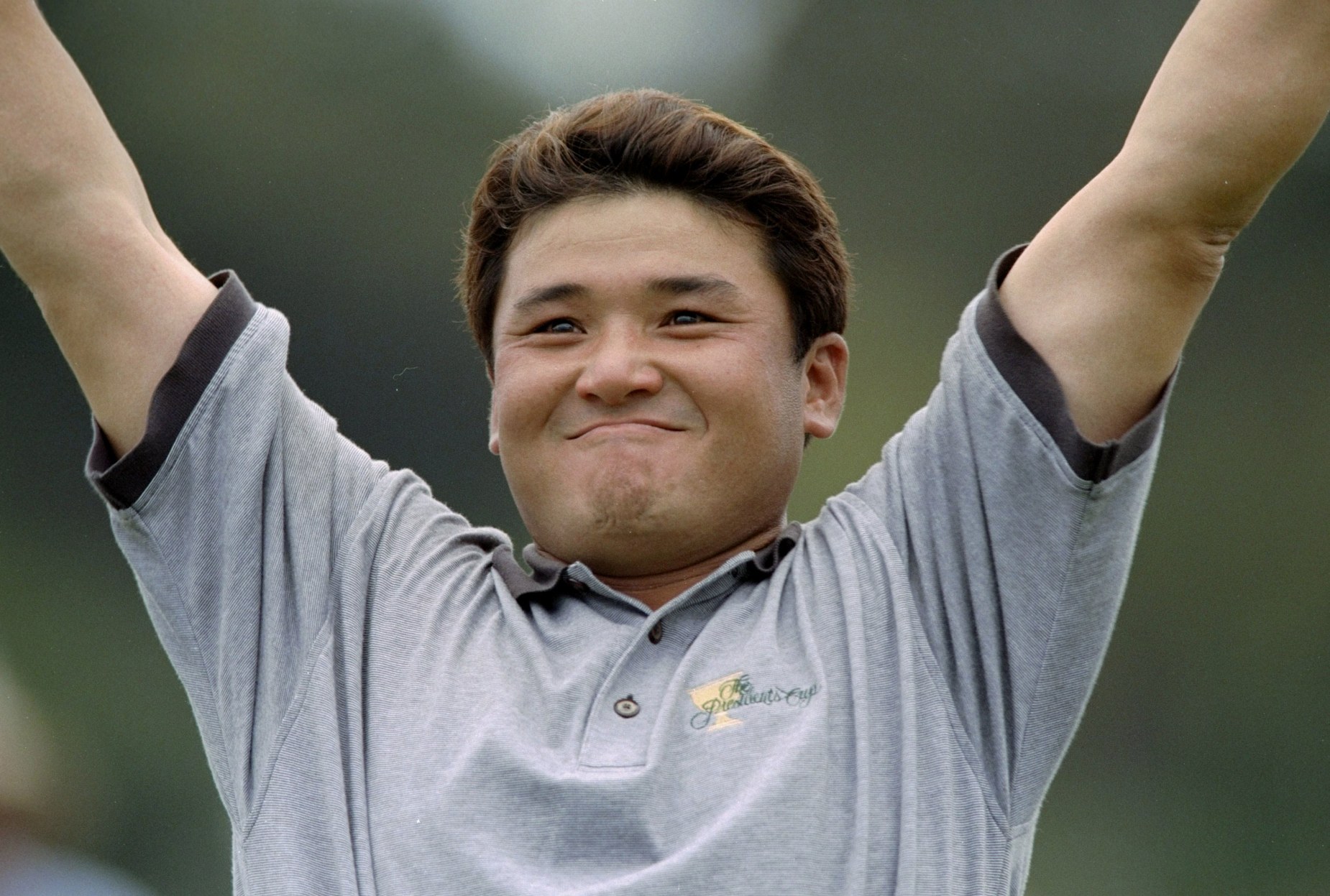
Nick Wilson
Maruyama was an unknown to Americans before going 5-0 and becoming a surprise International team hero.
Home course advantage
No one knew Royal Melbourne like Norman, who had twice won the Australian Open on the course. Well, except for Parry, who grew up and played it hundreds of times. Thomson had great local knowledge to share as well. Meanwhile, the only American to win an Australian Open at Royal Melbourne was Tom Watson in 1984, and he wasn’t on the team. This was a genuine home-course advantage for the International squad. And it showed. Parry, in particular, was stellar, going 3-1 and delivering a 5-and-3 win over Justin Leonard to open Sunday’s singles session. In all, the Australian foursome of Norman, Parry, Elkington and Stuart Appleby went 11-3-4.
Putting
Yes, it always comes down to putting, and the U.S. team should have known what it was in for on the first day when Nobilo made a 40-foot birdie putt on the 18th to steal a full point for himself and Turner in a foursomes victory over Duval and O’Meara, the reigning Masters and British Open champion. Great putting became contagious. Everything seemed to go right—and go in—for the International team. “They played some of the most unbelievable golf,” Nicklaus said.
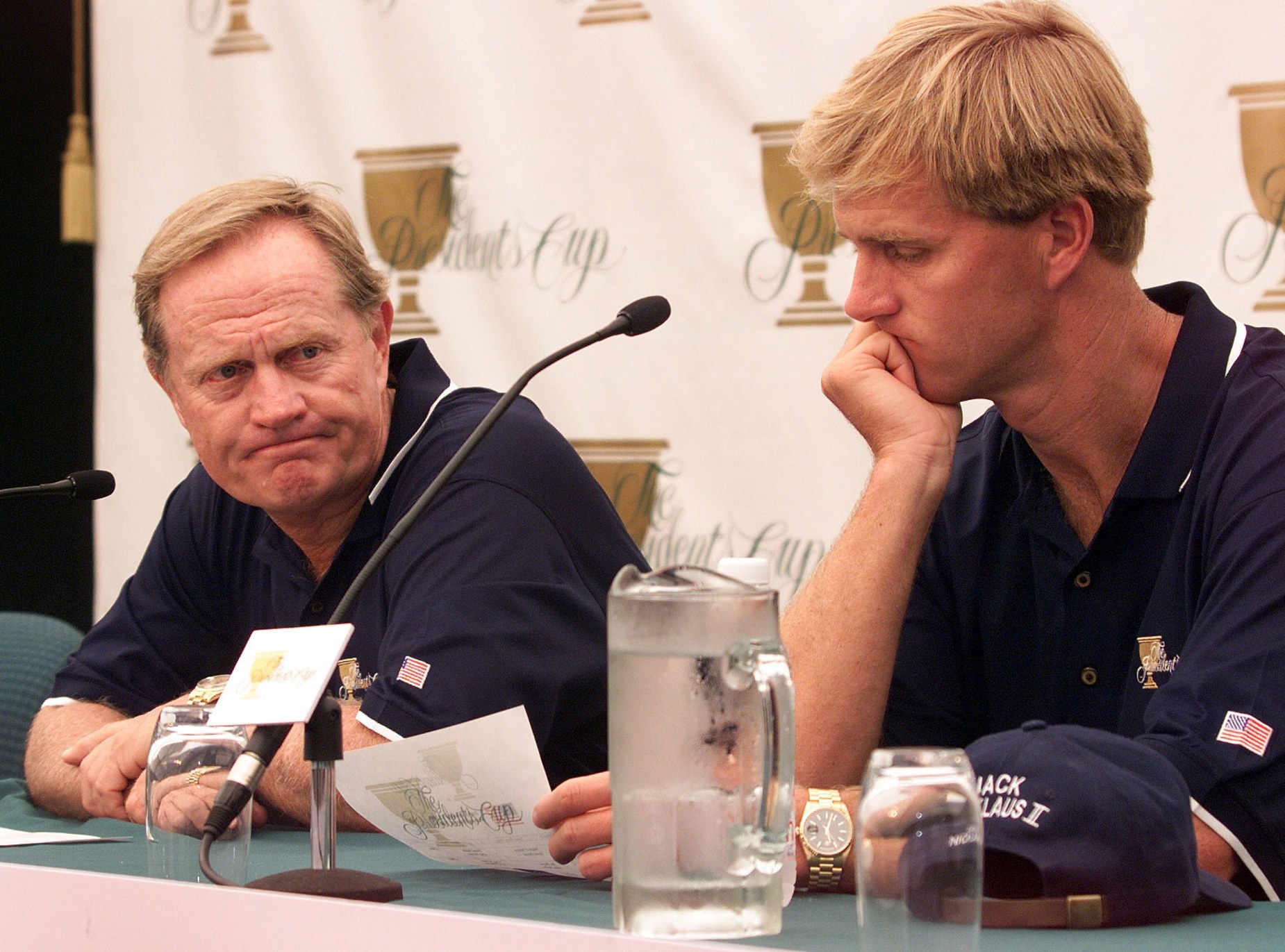
William West
U.S. team member Davis Love III apologized to Nicklaus (shown with his son/assistant captain Jackie) afterwards for not playing up to their potential.
To say that the victory was special to the home team was an understatement. “Just recording those moments of joy for us in Melbourne, that was one of the highlights of my golf career,” said Thomson, a five-time Open champion and World Golf Hall of Famer, the following year when he accepted another captaincy opposite Ken Venturi for the 2000 Presidents Cup. “Even though I wasn’t playing, I felt I was very much involved in all those chips and putts that went in the hole and all that.”
He then added, “I hope without any disparagement to the previous team, that this will absolutely be a stronger one [in 2000].” (Thomson, who passed away in 2018, will be honoured this week at Royal Melbourne during a ceremony prior to the matches.)
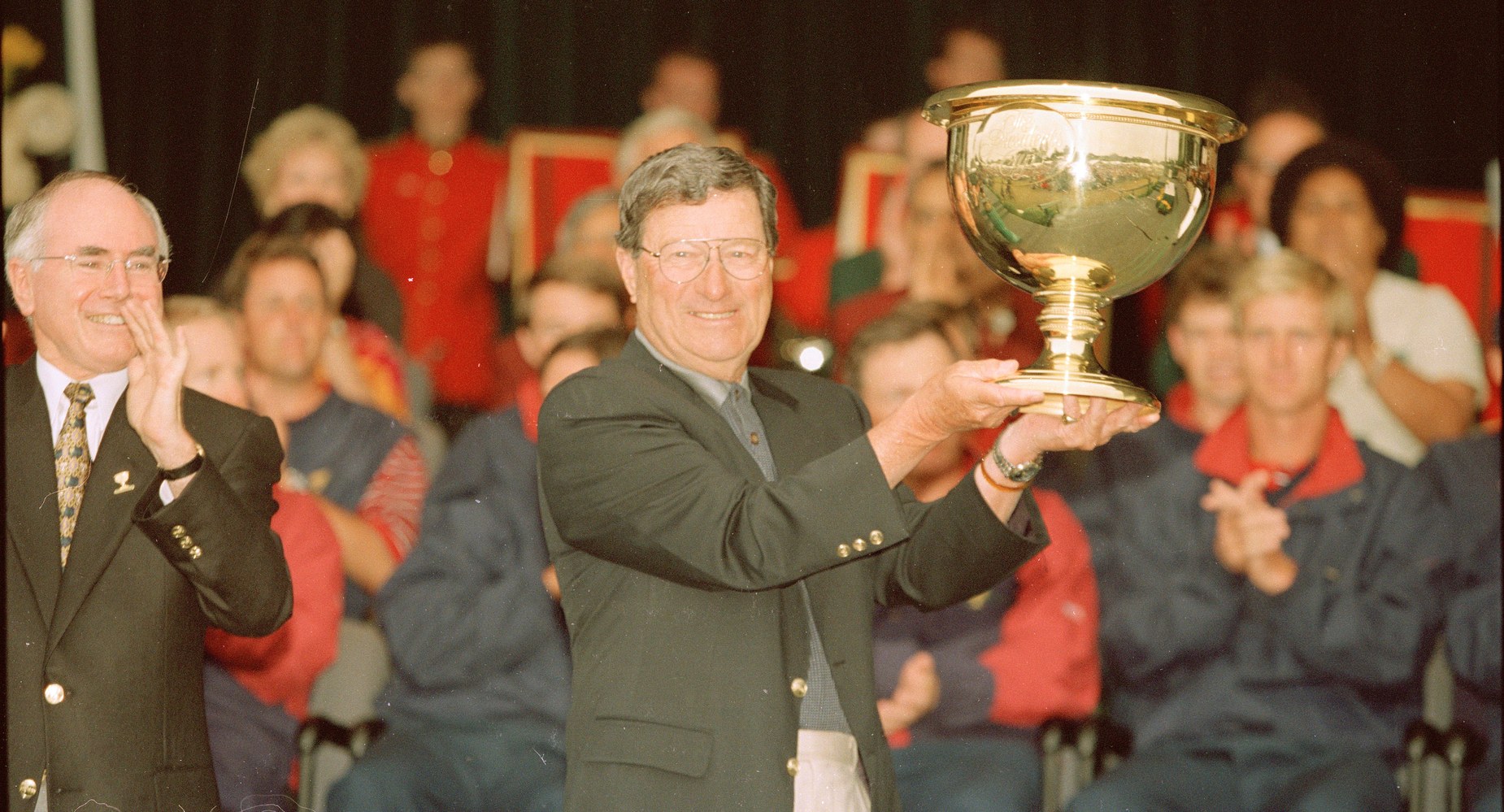
PGA TOUR ArchiveThomson’s pride in his team’s accomplishment was obvious.
Finchem had hopes that the Internationals’ success in Melbourne was a harbinger of great things to come and noted how formidable the International team looked for future matches. “The whole reason for the Presidents Cup at the inception, primarily, was that the good number of international players who, if you look at the World Golf Rankings each year, have moved higher and higher in terms of their place and did not have an opportunity to participate in this kind of competition,” he said in 2000. “And what has developed over the last six years is a real camaraderie and coming together by those international players, so that as we saw in Melbourne, they are a cohesive team. They include some of the very best players in the world. There is no weakness in that team, and they were able to play well enough to beat the United States.”
Inexplicably, that cohesion didn’t last. And the International team’s success was short-lived. Other than the stirring tie in 2003 in South Africa, the Internationals have yet to recapture the formula that propelled them to victory in 1998. They have lost seven straight matches since they shared the cup, including a four-point loss in 2011 at Royal Melbourne. And they barely put up a fight two years ago at Liberty National in New Jersey, losing 19-11. Something got lost along the way. Only, once since ’03, in Korea in 2015 when the event came down to the last match, has the U.S. won by fewer than three points.
The promise of 1998 never has been fulfilled, and the U.S. team this week is again heavily favoured. Can Ernie Els, the International captain, find the magic that he was a part of 21 years ago? It’s hard to say, but he’ll need to find a rallying cry for his squad. Meanwhile, having been a part of that lopsided loss in ’98 in his first Presidents Cup as a player, Woods remembers well what held the Americans back that week. The fact that all of his players except Dustin Johnson played at the Hero means they aren’t coming in cold this time.
Perhaps the fact that International veterans like Adam Scott are desperate for a victory will make a difference. Perhaps the infusion of first-time players—seven in all—also can bring enthusiasm to the home side. Perhaps the memory of the beat-down at Liberty National will inspire carryover players such as Adam Hadwin. Perhaps catching the U.S. after another poor Ryder Cup performance in 2018 gives them an opening.
A lot of things would have to go right for the International team this week. Just like they did in 1998.

